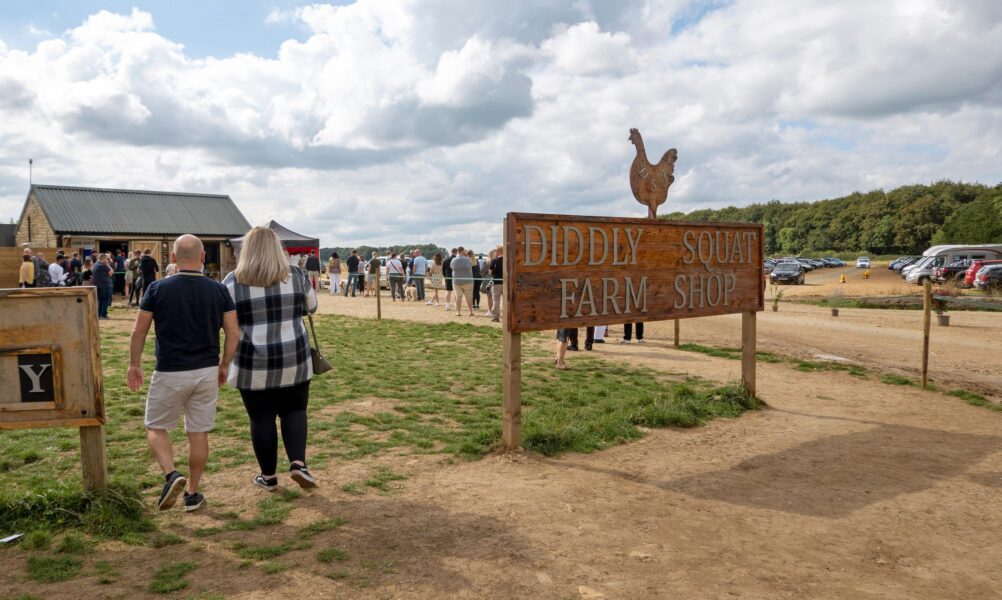
Jeremy Clarkson captures the joys of farming at Diddly Squat. James Rebanks, author of A Shepherd’s Life, says the Amazon series has done more for British farming than everything else put together.
Rural land is becoming the investment of choice for the mega-rich. Back in August last year, Bill Gates made headlines by buying up farmland the size of New York City in 10 years. Jeff Bezos, who owns 420,000 acres, has twice as much. Ted Turner has 2,2 million acres—and the largest privately-owned buffalo herd. Paul Tudor Jones owns a similar area in Africa. In America the 100 richest people own 1.86% of the land, or 42,1 million acres. In this country, however, 25,000 people own half of England.
An investment safer than houses
Guy Shrubsole, who works as a campaigner for the environmental charity Friends of the Earth and who wrote a book entitled Who Owns England, says it is notoriously difficult to establish who owns what in this country. But a combination of the development of digital maps and data as well as pressure from campaigners has made it possible to assemble the statistics. “A few thousand dukes, baronets and country squires own far more land than all of middle England put together.”
Prominent on the list are the Boughton estate in Northamptonshire, belonging to the Duke of Buccleuch, the Woburn estate, which is owned by the Duke of Bedford, and the Badminton estate in Gloucestershire, owned by the Duke and Duchess of Beaufort. Several large grouse moor estates and Beeswax Dyson Farming, a farm owned by pro-Brexit businessman James Dyson, are also high on the list, according to The Guardian. The Grosvenor family own 300 acres of Belgravia and Mayfair: its property company paid a £47m dividend last year, despite a pre-tax loss in 2020, its worst performance since 2008, due to Covid.
Shrubsole estimates that “a handful of newly moneyed industrialists, oligarchs and City bankers” own around 17% of England. The bulk of the population owns very little land or none at all. Those who own homes in England, in total, own only 5% of the country.”
Worth up to £10,000
Farmland values hit a four-year high in the third quarter of 2021, with limited supply and strong demand supporting the market, according to Farmers Weekly.
The average value of arable farmland in England rose to £9,700/acre in the third quarter of 2021, the highest quarterly average since 2018, according to Strutt & Parker’s Farmland Database. Matthew Sudlow, head of estates and farm agency, said the rise is a reflection of historically low levels of supply combined with firm demand from a range of buyers.
“A number of sales completed at more than £10,000/acre,” he said. “However, given the relatively small number of transactions, the whole year average may be a more reliable measure. This is £9,200/acre, with 60% of sales agreed at £8,000-£10,000/acre.”
According to the Knight Frank Farmland Index, the average value of land in England and Wales reached levels last seen at the beginning of 2017.
Increasing in value
Andrew Shirley, head of rural research, said prices for bare land rose almost 4% during July to September to £7,320/acre.
This marked a third consecutive quarter of growth and was the strongest quarterly performance since March 2014. The annual growth increased to 5%, the biggest 12-month jump since June 2015.
Supply was only marginally up on 2020, which saw the lowest number of acres launched on record, due to Covid-19 restrictions.
“Demand is increasingly being driven by three factors – rollover relief, rewilding or sustainability focused buyers and carbon investors,” said Mr Shirley.
Fewer farmers own the land
“Farmers accounted for 39% of buyers, compared with the 55% who were either lifestyle purchasers or investors.”A larger volume of land is likely to come to the market in 2022, and there remains a large pool of buyers that should pick up a significant amount before supply and demand starts to swing the other way.
In either country, land is a good investment. America is losing 2,000 acres of farmland a day. The price of land is $3,160 an acre, up from $1,329 in the mid 1990s but significantly less than in the UK. Steve Bruere, president of the People’s Company in the States, says land as an asset class is worth about $3 trillion
Safe and secure
“It is a stable investment, not correlated with the stock market,” he told CNBC. “Shares lost up to 40% at the start of Covid: with land you don’t wake up and find the value of your investment is 50c in the dollar.” Returns are around 2.5%, aside from the capital appreciation, and there are tax breaks associated with owning rural land—plus it is finite. A growing population, needing food and housing, grows its value.
Is this the investment for you? Crunch the numbers for yourself with a free, 21-day trial of the Forecast 5 budgeting and forecasting software. You will be amazed how simple it is to run rolling forecasts, adjust budgets across all headings—and how it will also help your business work better in these changing times.